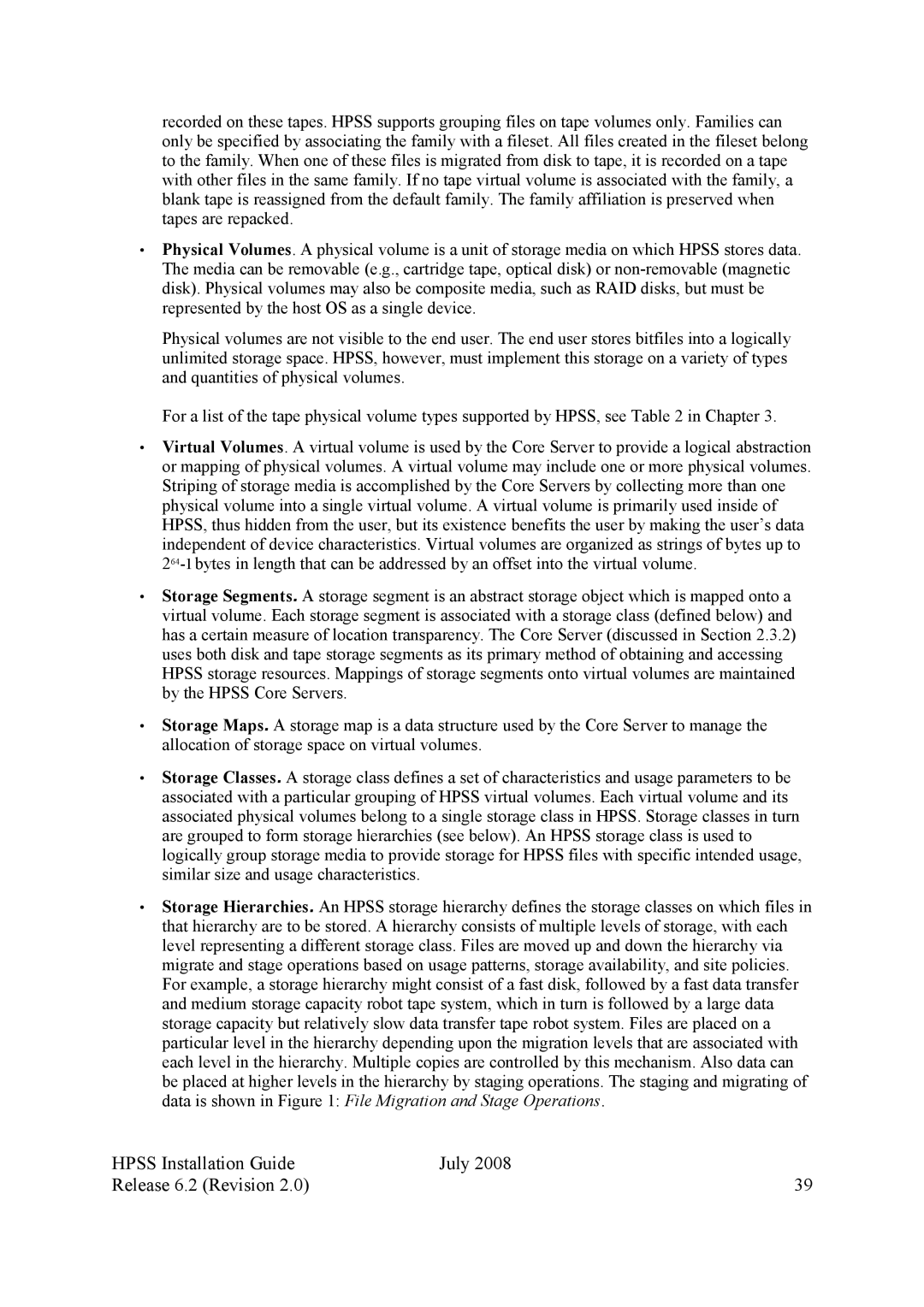recorded on these tapes. HPSS supports grouping files on tape volumes only. Families can only be specified by associating the family with a fileset. All files created in the fileset belong to the family. When one of these files is migrated from disk to tape, it is recorded on a tape with other files in the same family. If no tape virtual volume is associated with the family, a blank tape is reassigned from the default family. The family affiliation is preserved when tapes are repacked.
•Physical Volumes. A physical volume is a unit of storage media on which HPSS stores data. The media can be removable (e.g., cartridge tape, optical disk) or
Physical volumes are not visible to the end user. The end user stores bitfiles into a logically unlimited storage space. HPSS, however, must implement this storage on a variety of types and quantities of physical volumes.
For a list of the tape physical volume types supported by HPSS, see Table 2 in Chapter 3.
•Virtual Volumes. A virtual volume is used by the Core Server to provide a logical abstraction or mapping of physical volumes. A virtual volume may include one or more physical volumes. Striping of storage media is accomplished by the Core Servers by collecting more than one physical volume into a single virtual volume. A virtual volume is primarily used inside of HPSS, thus hidden from the user, but its existence benefits the user by making the user’s data independent of device characteristics. Virtual volumes are organized as strings of bytes up to
•Storage Segments. A storage segment is an abstract storage object which is mapped onto a virtual volume. Each storage segment is associated with a storage class (defined below) and has a certain measure of location transparency. The Core Server (discussed in Section 2.3.2) uses both disk and tape storage segments as its primary method of obtaining and accessing HPSS storage resources. Mappings of storage segments onto virtual volumes are maintained by the HPSS Core Servers.
•Storage Maps. A storage map is a data structure used by the Core Server to manage the allocation of storage space on virtual volumes.
•Storage Classes. A storage class defines a set of characteristics and usage parameters to be associated with a particular grouping of HPSS virtual volumes. Each virtual volume and its associated physical volumes belong to a single storage class in HPSS. Storage classes in turn are grouped to form storage hierarchies (see below). An HPSS storage class is used to logically group storage media to provide storage for HPSS files with specific intended usage, similar size and usage characteristics.
•Storage Hierarchies. An HPSS storage hierarchy defines the storage classes on which files in that hierarchy are to be stored. A hierarchy consists of multiple levels of storage, with each level representing a different storage class. Files are moved up and down the hierarchy via migrate and stage operations based on usage patterns, storage availability, and site policies. For example, a storage hierarchy might consist of a fast disk, followed by a fast data transfer and medium storage capacity robot tape system, which in turn is followed by a large data storage capacity but relatively slow data transfer tape robot system. Files are placed on a particular level in the hierarchy depending upon the migration levels that are associated with each level in the hierarchy. Multiple copies are controlled by this mechanism. Also data can be placed at higher levels in the hierarchy by staging operations. The staging and migrating of data is shown in Figure 1: File Migration and Stage Operations.
HPSS Installation Guide | July 2008 |
Release 6.2 (Revision 2.0) | 39 |
